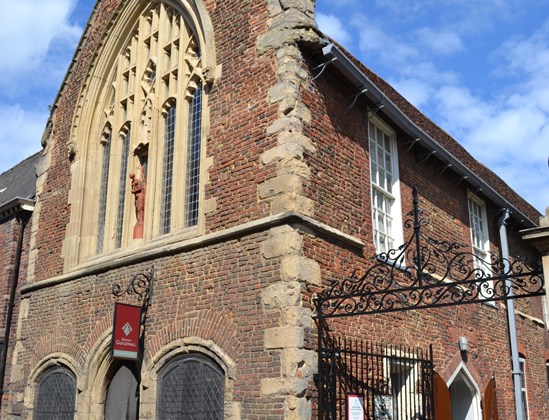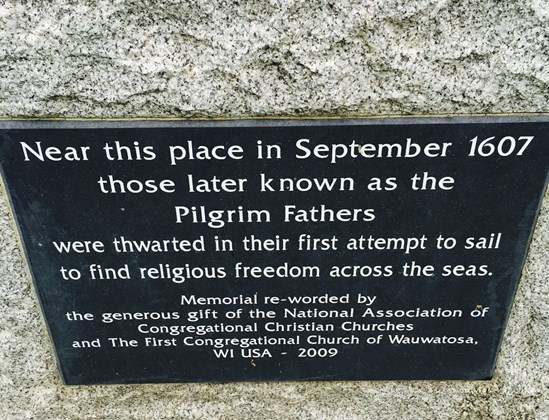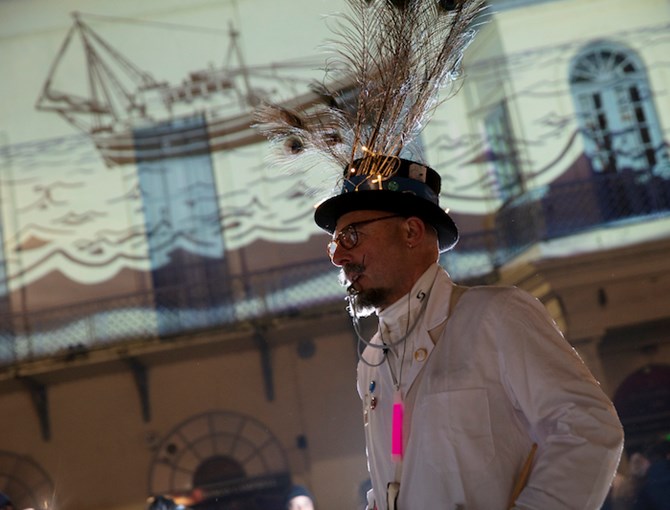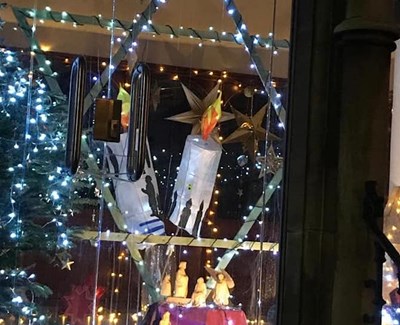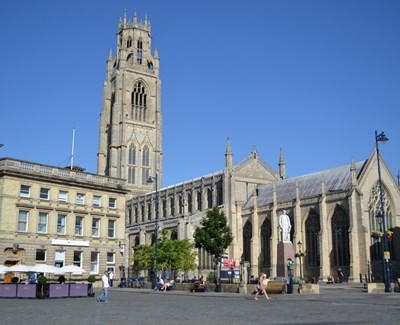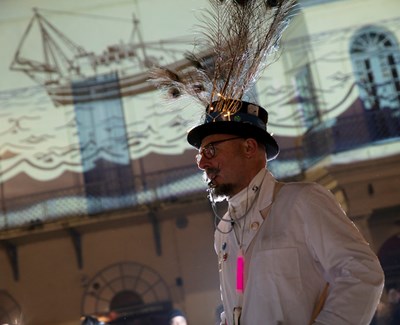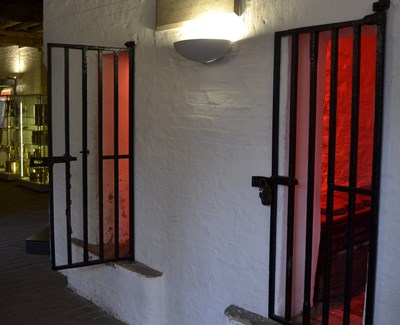

- Contact Us
- Search
-
Mayflower400 partner destinations:
Visiting Boston, Lincolnshire
Boston is a lively historic port and market town located on the River Witham, joining the North Sea at a part of England's east coast known as ‘The Wash’. Boston and its magnificent church are named after St Botolph, an Anglo Saxon monk, who according to tradition visited the area in the 7th Century.
Boston today is a diverse and vibrant town to explore and discover, with a range of quality national and independent shops, wonderful dining experiences and a unique history and heritage. Boston’s medieval wealth can be seen from surviving buildings in the town that you can still visit today; St Botolph’s Church (known locally as ‘The Stump’), St Mary’s Guildhall and the town’s stunning Market Place are just three examples. The large weekly markets each Wednesday and Saturday and its annual May Fair, are also legacies from the medieval period and draw visitors from miles around.
Nearby are RSPB sites - Frampton Marsh and Frieston Shore where visitors can experience the sheer diversity of The Wash, enjoyed by birdwatchers, families and visitors who want to get close to the special natural environment of this part of England.
Boston and the Mayflower story
One night in the autumn of 1607, a passionate and determined group of men, women and children secretly met a boat on the edge of ‘The Wash’ at Scotia Creek, Fishtoft, near Boston. They planned to defy the authority of the English church and escape across the North Sea to Holland to live in religious freedom. They had walked 60 miles from Scrooby, near Gainsborough, and were hoping for a new life.
They had arranged to travel with the captain of a ship; instead he betrayed them and the local militia seized the group and took their money, books and personal possessions. Stripped of their belongings and hope, the group were brought by boat back to Boston and held and tried at the Guildhall, home to the local law court and cells. After a month, most were sent back “from whence they came”, but seven ringleaders were ordered to the higher Assizes court of Lincoln.
Today, you can visit Boston Guildhall and see the cells where they were held. Nearby is the Pilgrim Fathers memorial marking the point at Scotia Creek from where they made their attempt to escape.
The Guildhall was recently visited by Hollywood actress Ashley Judd, a descendant of William Brewster - senior leader of the Pilgrims. She was astonished to find a tiny preserved historical cell - with a plaque commemorating the fact it had held William Brewster, her 10 times great grandfather.
Judd is among the 35 million Americans who can trace their ancestry back to the Mayflower, the revelation was made to Judd on an emotional episode of the popular TV show Who Do You Think You Are?
Boston's position on the edge of the North Sea and its river connection with the city of Lincoln, allowed the town to develop as an important trading centre.
In the early medieval period, only London was richer and more important than Boston as a port; Boston’s wealth was based on wool. During the time when wool was England’s main export, the town was sending three million fleeces a year abroad, making a significant profit.
As the value of wool declined, the town changed. By the 1700s, the agricultural revolution provided another economic boost. During this time, Boston supplied one third of London’s grain directly from granaries situated along the riverside. Once again, this wealth influenced the architecture of the town and many fine Georgian buildings still remain.
Supported by our national sponsors and funding partners

Boston's Mayflower programme
Supported by a £500,000 award from the Heritage Lottery Fund, partners from across Nottinghamshire, Lincolnshire and South Yorkshire came together to develop an exceptional programme of heritage activity commemorating the birthplace of the Separatists and the stories that inspired their journey to America. More than 100 activities were planned in the build-up to and through 2020 and 2021. Alongside the PilgrimAGE 2020 festival, highlights included:
-
The region’s existing self-drive Mayflower Trail was renamed the Pilgrims Trail, and received significant investment to increase its scale and content, including digital resources. The trail was enhanced by a range of activities targeting visitors and residents, providing unique experiences that engaged people with the local landscape and heritage
-
A new Pilgrims Gallery at Bassetlaw Museum opened in May 2019. This tells the story of the Pilgrims in North Nottinghamshire, addressing core themes of tolerance, freedom and migration while also acting as the focal point for the Pilgrims Trail
-
A series of high-profile exhibitions took place across the Roots region, including a new permanent installation in Gainsborough Old Hall and multiple shows across Doncaster’s Heritage Festival
-
Imagination Museum Mayflower 400 by Katie Green used the medium of dance to interpret the Pilgrims' story and engage young people, with performances based at non-traditional dance spaces such as museums and exhibitions
-
A brilliantly diverse cultural programme, with activity ranging across performance, photography, health and well-being, digital, writing, schools engagement and more. This was developed in partnership with local communities and organisations such as Bassetlaw Christian Heritage and the Percy Laws Gallery, ensuring that content was accessible, authentic and carry real resonance for visitors and residents
Boston Mayflower Highlights
- Events
- Attractions
- Accommodation
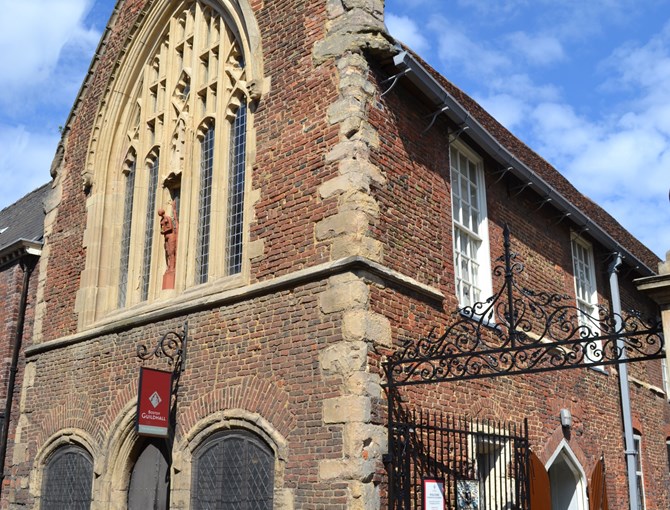
Boston Guildhall
Visitor Attraction
The Scrooby congregation were held and tried at Boston Guildhall.
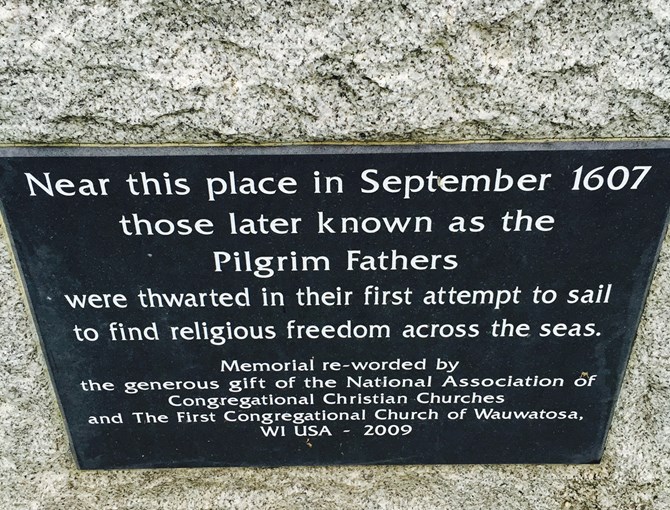
Pilgrim Memorial
Monument / Memorial
This memorial marks the area from where the Separatists made their first attempt to escape.
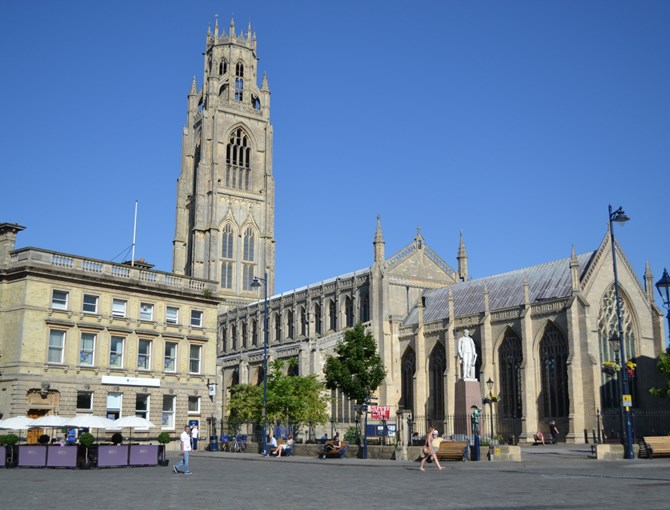
St. Botolph's Church
Visitor Attraction
The 'Puritan Path' is named after Rev. John Cotton who was preacher here.
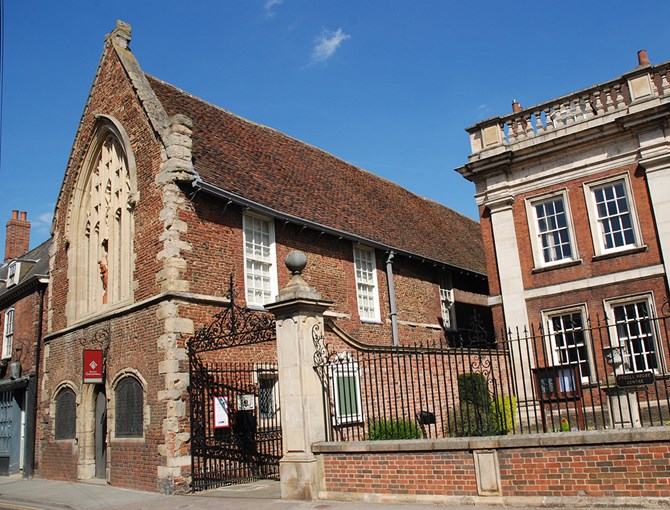
Fydell House
Visitor Attraction
A Georgian house with stunning gardens.
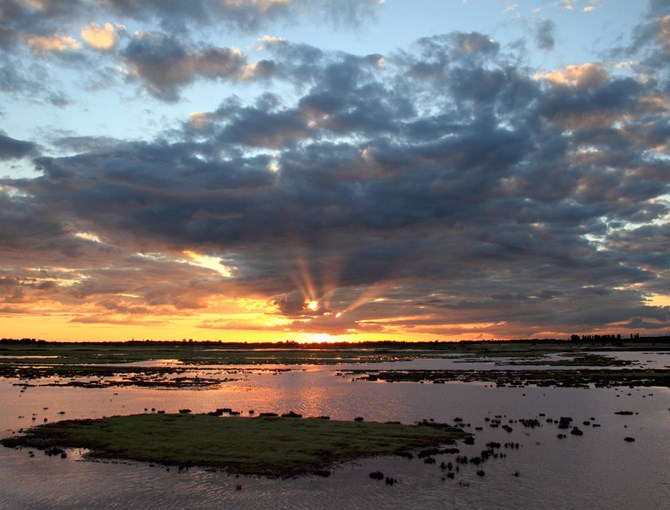
RSBP Frampton Marsh
Park / Open Space
Enjoy the Lincolnshire side of The Wash, with close views of its stunning wildlife.
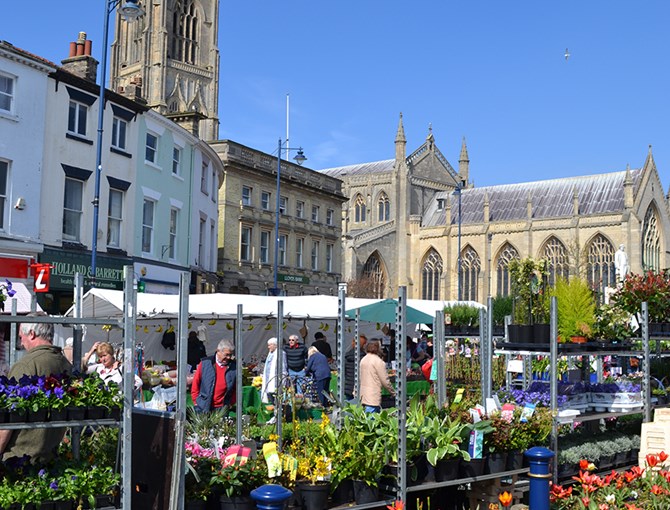
Boston Markets
Shopping and Markets
Boston open-air markets; trading since 1545.
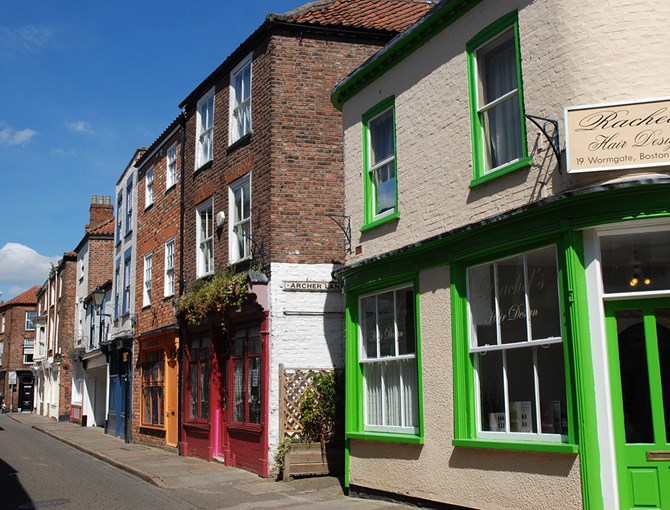
Medieval Lanes
Shopping and Markets
Explore the medieval lanes of Boston.
Maud Foster Windmill
Visitor Attraction
An English tower mill built in 1819.
Elms Farm Cottages, Boston
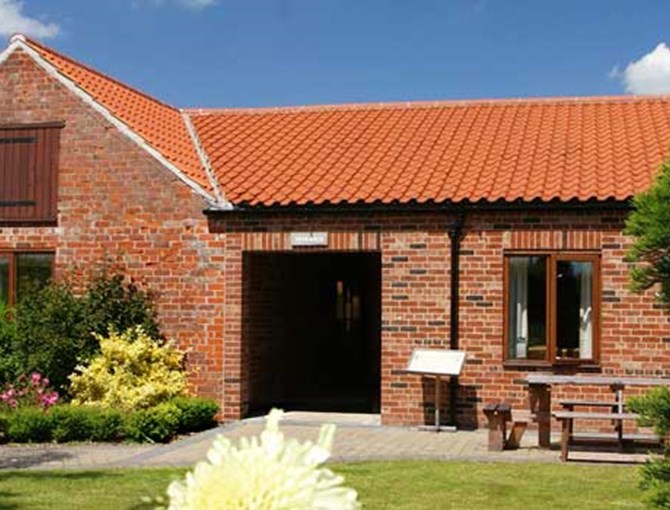
Elms Farm Cottages, Boston
Self-Catering
Luxury self-catering converted barns and stables.
The White Hart Hotel, Boston
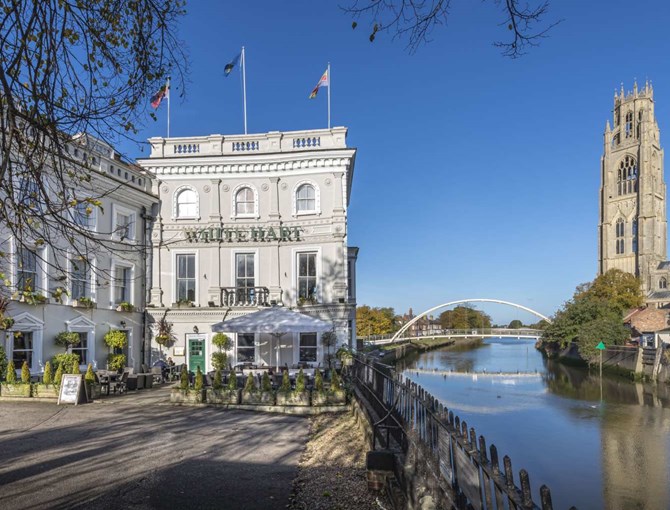
The White Hart Hotel, Boston
Hotel
A historic hotel on the River Witham.
Long Acres Touring Park, Boston
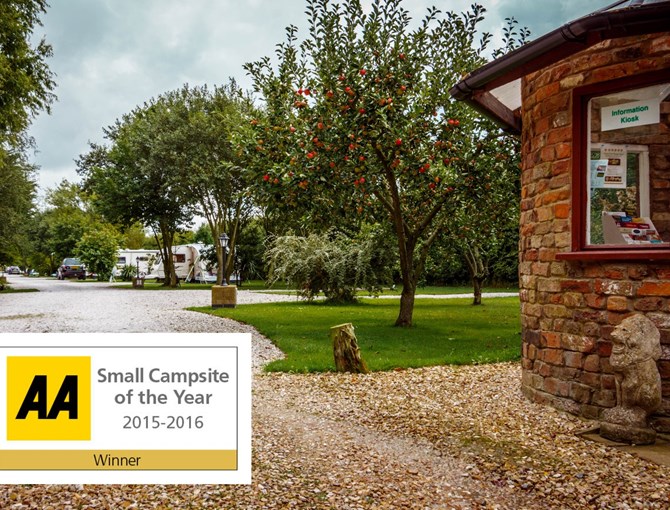
Long Acres Touring Park, Boston
Camping and Caravanning
Petwood Hotel
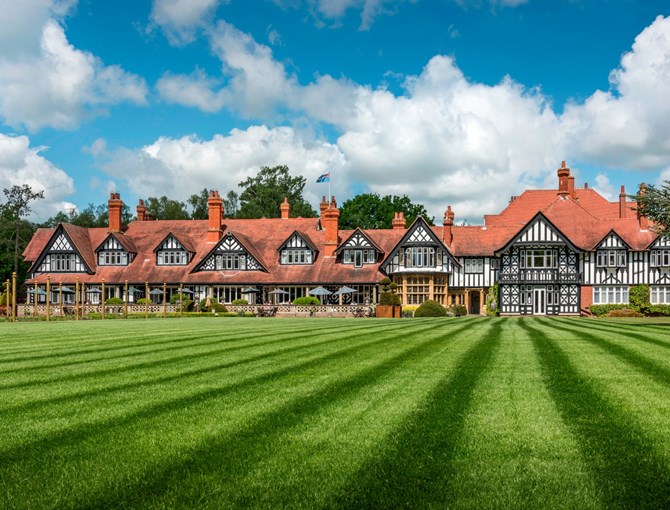
Petwood Hotel, Woodhall Spa
Hotel
A charming hotel bursting with character and history.
Start Explore the Mayflower Trail
Scrooby Manor House
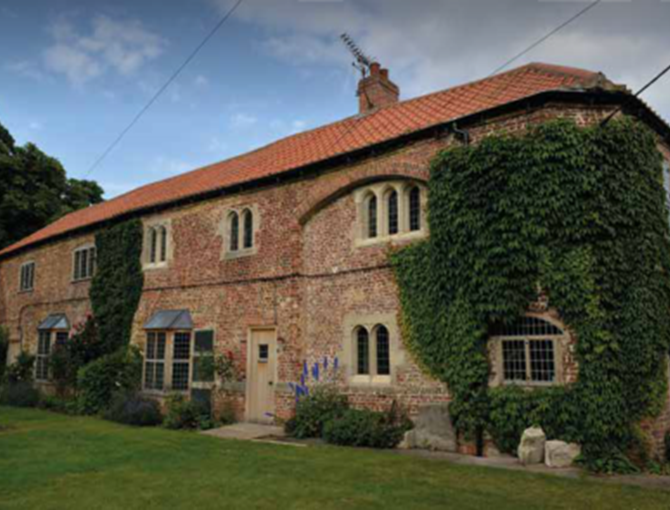
Scrooby & Babworth
The birthplace of Pilgrim elder William Brewster, Scrooby & Babworth is a firm part of the origins of the Mayflower story. These pretty villages are in the heart of rural Nottinghamshire.
Boston Stump
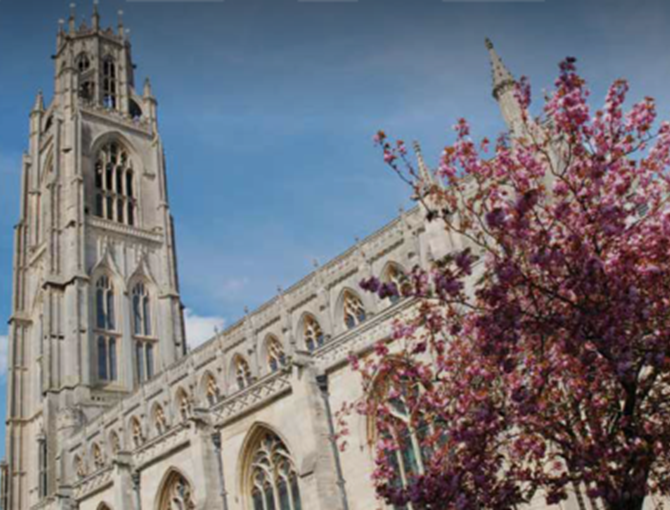
Boston, Lincolnshire
A beautiful market town in the heart of Lincolnshire’s dramatic Fenland, Boston is immersed in history and was the setting for a dramatic twist in the Pilgrims' history.
Leiden American Pilgrim Museum
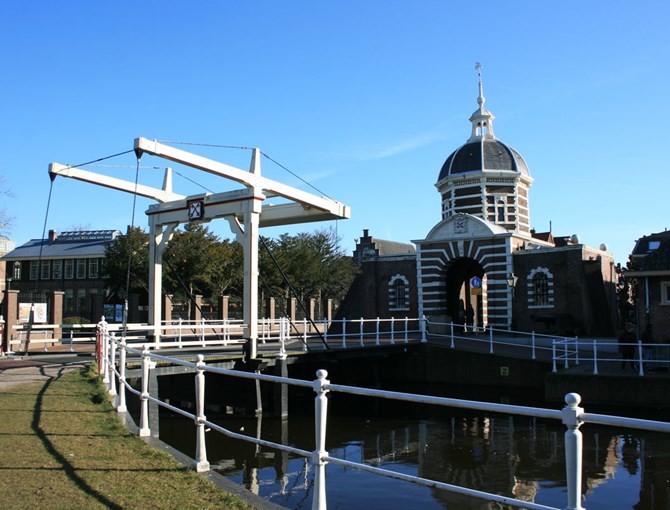
Leiden, Holland
After escaping England, the Dutch city of Leiden offered sanctuary to the Pilgrims and the promise of a new life. Leiden is as welcoming now as it was then.
St. Helena's Church, Austerfield
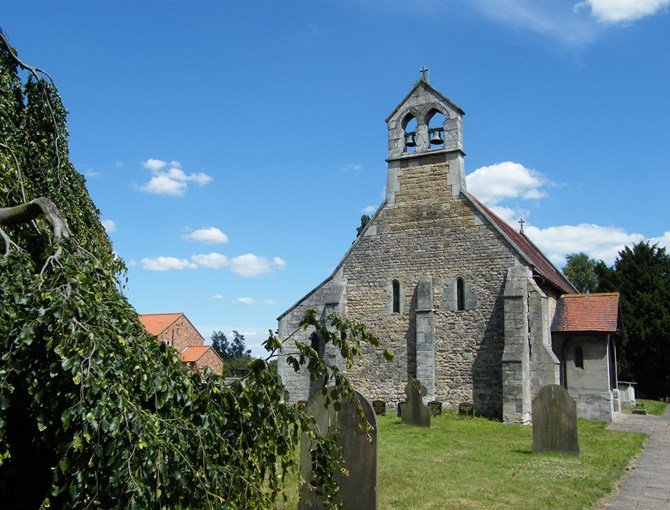
Austerfield, Doncaster
The second elected Governor of the Plymouth Colony in Massachusetts was William Bradford, from Austerfield - a small village near Doncaster that boasts superb English countryside.
Sign up for the latest Mayflower 400 news
You'll be the first to hear the latest Mayflower news, events, and more.
Log In
Register
Mayflower 400 Proudly Supported by our National Sponsors and Funding Partners
